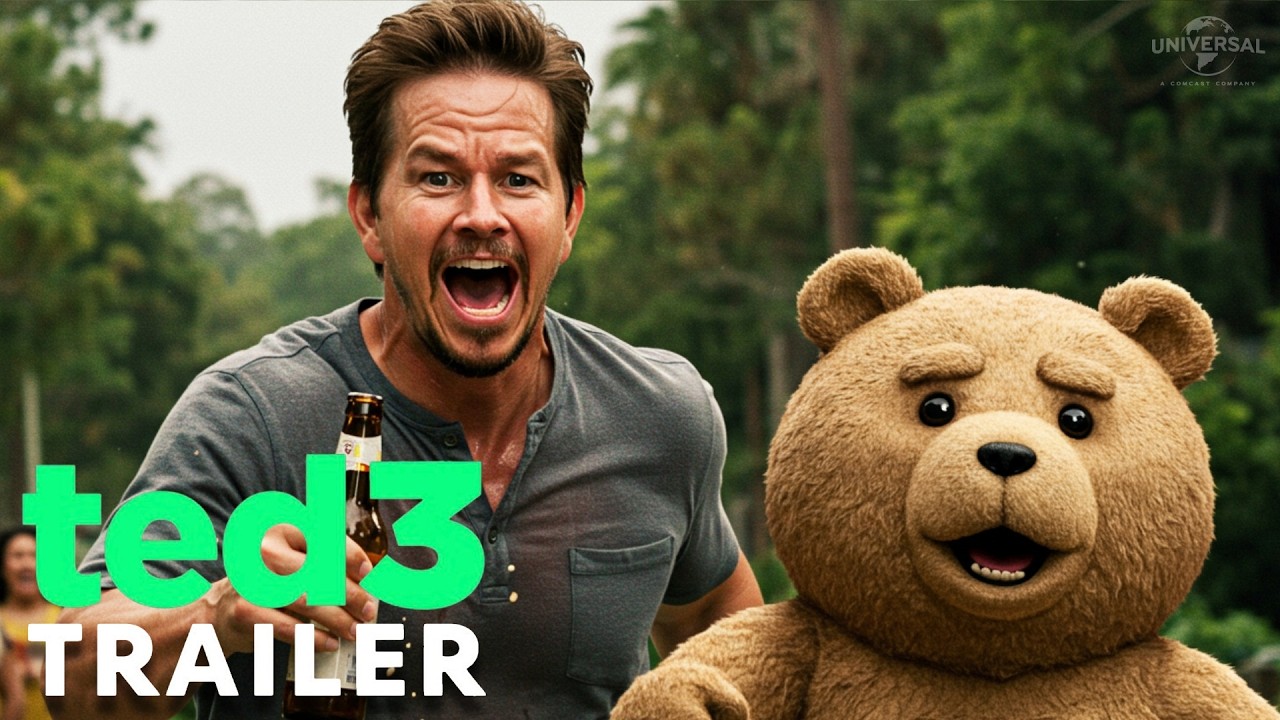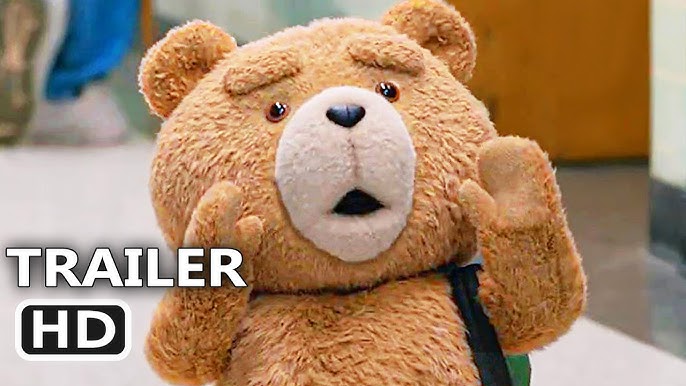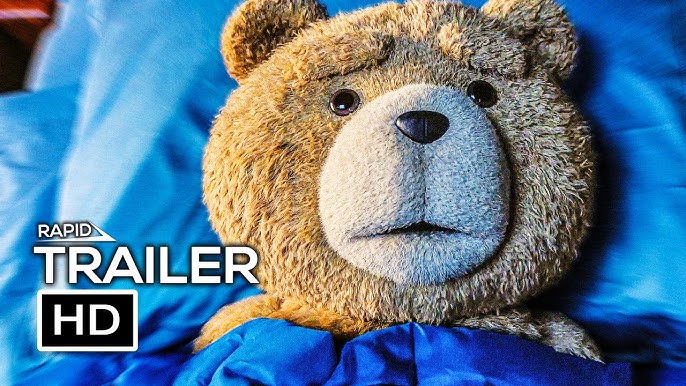Ted 3 (2025)

Ted 3 (2025) – Friendship, Chaos, and Comedy Gone Wild
The Ted franchise has always occupied a unique space in contemporary comedy, blending outrageous humor, crude antics, and surprisingly heartfelt moments. Since the first Ted film debuted in 2012, audiences have been captivated by the misadventures of John Bennett (Mark Wahlberg) and his anthropomorphic teddy bear, Ted (voiced by Seth MacFarlane). What made the original films memorable wasn’t just the shock value of a talking, drinking, and often profane teddy bear—it was the exploration of friendship, loyalty, and the challenges of growing up while navigating adult life. Ted 3 (2025) continues this legacy, taking the humor to new heights while deepening the emotional stakes for its characters.
At the core of the film is the enduring friendship between John Bennett and Ted. John, now older and more mature, is navigating the challenges of adulthood with his longtime girlfriend, Lori (Mila Kunis). Their relationship is serious and evolving, reflecting the complexities of long-term commitment. However, Ted remains as unruly and mischievous as ever. A booze-loving, irreverent, and often socially inappropriate teddy bear, Ted has a knack for creating chaos wherever he goes. His antics provide much of the film’s comedic momentum, serving as both the source of hilarity and the catalyst for conflict. The tension between Ted’s free-spirited behavior and John’s growing responsibilities drives the narrative, creating a constant push-and-pull that is both humorous and relatable.
Director Seth MacFarlane, who also voices Ted, returns with his signature blend of raunchy comedy and subtle emotional depth. His direction ensures that Ted 3 maintains the franchise’s distinct voice, balancing moments of outrageous humor with quieter, character-driven scenes that explore relationships and personal growth. MacFarlane’s writing is sharp, witty, and often self-referential, creating layers of comedy that reward both casual viewers and long-time fans of the series.
One of the film’s strengths is its ability to juxtapose extreme comedy with genuine heart. While Ted’s actions often border on chaos, the underlying themes of loyalty, friendship, and love remain central. John and Ted’s bond is tested repeatedly throughout the film, particularly as John attempts to balance his adult life with the unpredictable influence of his teddy bear companion. These challenges are portrayed with authenticity, making the humor feel grounded despite the absurd premise. Moments of sincere emotion emerge unexpectedly, reminding the audience that beneath the crude jokes and slapstick antics lies a story about the enduring power of friendship.
Mila Kunis’s portrayal of Lori adds another layer of depth to the narrative. As John’s partner, Lori represents stability, responsibility, and emotional grounding. She is patient but firm, often serving as the voice of reason when Ted’s chaos threatens to derail everyday life. Kunis’s performance is nuanced, balancing comedic timing with moments of frustration and vulnerability. Her interactions with both John and Ted highlight the central conflict of the film: how does one maintain love and relationships when an uncontrollable force like Ted is constantly stirring trouble? The dynamic between the three characters drives much of the humor while also providing opportunities for character development.
The comedy in Ted 3 is as bold and irreverent as ever. The film embraces its raunchy roots, incorporating adult humor, pop culture references, and outrageous scenarios that push the boundaries of traditional comedy. From absurd public spectacles to private misadventures, the film delivers a steady stream of laughs, often relying on the contrast between Ted’s childish behavior and the adult world around him. The humor is frequently outrageous, but it is rarely empty; every gag serves to reinforce character relationships or advance the story, creating a cohesive and engaging comedic experience.
Visually, the film is polished and dynamic, making excellent use of modern CGI to bring Ted to life in a way that feels seamless alongside live-action actors. Ted’s expressions, body language, and comedic timing are meticulously crafted, ensuring that he feels like a tangible character rather than a digital construct. The visual gags are often enhanced by creative camera work, framing, and timing, resulting in comedic sequences that are both technically impressive and hilariously effective.
Ted 3 also explores themes of personal growth and the tension between maturity and freedom. John is at a crossroads in his life, struggling to reconcile his responsibilities as a partner with the desire to maintain his playful, carefree identity. Ted, by contrast, embodies the refusal to conform, challenging John to question whether growing up necessarily means abandoning joy, spontaneity, or the friendships that define us. This tension resonates on multiple levels, reflecting broader societal questions about adulthood, responsibility, and the sacrifices required to maintain meaningful connections.
The supporting cast contributes significantly to the film’s energy and humor. From eccentric friends and colleagues to over-the-top antagonists, each character is designed to enhance the chaotic world in which John and Ted operate. The ensemble cast brings diversity in comedic style, from slapstick to witty dialogue, ensuring that humor remains fresh and varied throughout the film. Cameos and references to previous installments of the franchise create a sense of continuity, rewarding loyal viewers while also introducing new audiences to the series’ distinctive world.
Music and sound design play critical roles in shaping the film’s tone. The soundtrack features a mix of high-energy tracks during comedic sequences and softer, emotive scores during moments of reflection, complementing the narrative’s balance of chaos and heart. Sound effects are employed to amplify humor, whether through exaggerated reactions, perfectly timed comedic beats, or immersive environmental cues that heighten the absurdity of Ted’s antics. Together, music and sound design create an auditory landscape that enhances both the comedic and emotional impact of each scene.
Pacing in Ted 3 is carefully calibrated to maintain engagement throughout the film’s runtime. The narrative alternates between high-octane sequences of mischief and quieter moments of character exploration, ensuring that the audience remains invested in both the comedy and the story. Each act escalates the stakes, often through a combination of Ted’s unpredictable behavior and the resulting complications in John and Lori’s life. By maintaining a rhythm that blends chaos, humor, and emotion, the film keeps viewers consistently entertained while also delivering meaningful character arcs.
A hallmark of the Ted franchise is its willingness to confront adult themes with humor and honesty. Ted 3 continues this tradition, exploring topics such as friendship, love, loyalty, and the challenges of balancing personal desires with relational obligations. While the film embraces irreverent and explicit comedy, it never loses sight of the emotional core that makes the characters relatable and compelling. The interplay of humor and heart ensures that the film resonates on multiple levels, appealing to audiences seeking both laughter and genuine emotional connection.
The film also cleverly integrates meta-humor and pop culture commentary. Ted’s interactions often reference contemporary social trends, popular media, and real-world absurdities, creating layers of humor that extend beyond the immediate narrative. These moments serve to engage the audience on multiple levels, providing laughs while also inviting reflection on the absurdities of modern life. The writing is sharp, with carefully crafted dialogue that captures both the wit and irreverence that define the franchise.
As the plot unfolds, the stakes escalate in a series of increasingly outrageous scenarios. Ted’s misadventures create a chain reaction of comedic disasters, forcing John and Lori to navigate challenges that test their relationship, patience, and problem-solving skills. Each obstacle highlights the contrast between Ted’s anarchic nature and the human characters’ desire for stability and normalcy, generating both humor and tension. The resolution of these conflicts combines clever storytelling, emotional resonance, and comedic payoff, ensuring that the film delivers a satisfying conclusion while leaving room for potential future installments.
In conclusion, Ted 3 (2025) is a triumphant continuation of a beloved franchise. It successfully balances outrageous comedy with heartfelt storytelling, offering audiences an experience that is both hilarious and emotionally engaging. Mark Wahlberg brings charisma and relatability to John Bennett, Mila Kunis provides a grounded and nuanced performance as Lori, and Seth MacFarlane’s Ted continues to deliver laugh-out-loud antics while exploring the deeper themes of friendship and personal growth.
The film honors the legacy of the previous Ted installments while expanding the characters’ world, exploring new comedic territory, and deepening the emotional stakes. With its sharp writing, dynamic visuals, memorable performances, and perfect blend of raunchy humor and heart, Ted 3 stands as a testament to the enduring appeal of unconventional friendships and the joy of embracing life’s chaos.
For fans of the franchise, the film is a nostalgic return to the absurdly funny world of Ted, filled with the wild antics, sharp dialogue, and emotional beats that have defined the series. For newcomers, it offers an accessible, laugh-packed, and surprisingly heartfelt comedy experience. Ted 3 proves that while growing up may be inevitable, the bonds of friendship—and the chaos they bring—are timeless.
With its riotous humor, unexpected emotional depth, and flawless execution of comedic set pieces, Ted 3 earns its place as a standout installment in contemporary comedy cinema, appealing to audiences who love laughter, irreverence, and the enduring power of friendship.









